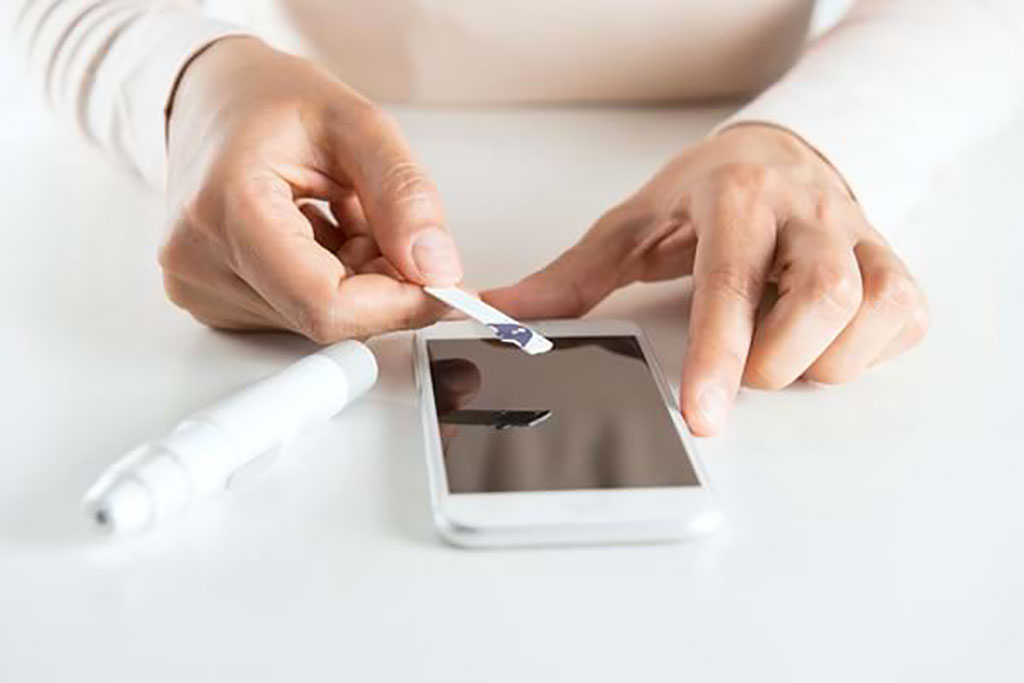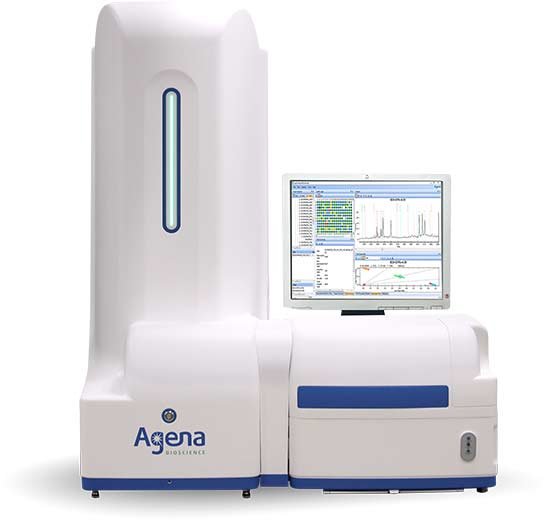CT Values Should Not Be Used to Assess Performance of SARS-CoV-2 PCR Tests or Triage COVID-19 Patients, Finds Study
|
By LabMedica International staff writers Posted on 13 Oct 2021 |

A novel study has shown that coronavirus test cycle threshold (Ct) values should not be used to assess the performance of coronavirus tests or to triage COVID-19 patients.
These findings of the study by an international group of scientists, led by the National Measurement Laboratory for Chemical and Bio-Measurement team at LGC (Middlesex, UK), could improve the development of coronavirus tests, which are crucial for managing the pandemic, as well as care for COVID-19 patients.
When a patient gets a standard coronavirus test - known as a PCR test - Ct values are generated as part of the testing process. These values are also commonly known as Cq or Cp values. In WHO’s recommendations for coronavirus test developers and funders, the organization proposes a Ct of 25 as the minimum level of virus that should be detected by point-of-care coronavirus tests (i.e., tests that can be performed near the patient). Some research has also suggested that Ct values could potentially identify patients who have high viral loads and are at increased risk for serious disease. However, in July of this year, the American Association for Clinical Chemistry (AACC) had issued a public statement advising against the use of these values to guide COVID-19 public health efforts or treatment due to a lack of conclusive data supporting this.
In an effort to fill this data gap, the international team of researchers set out to determine how the WHO’s suggested Ct cut-off of 25 impacts coronavirus test performance. To do this, the researchers analyzed the results of more than 6,000 patients who underwent coronavirus PCR testing at three clinical laboratories in the UK, Belgium, and the Republic of Korea. For the purposes of this study, all PCR tests used were considered to have 100% clinical sensitivity (i.e., the ability to correctly identify patients with COVID-19 100% of the time). However, when the team interpreted the tests’ results using the WHO’s cut-off, the tests’ clinical sensitivity dropped, varying from approximately 16% to 90% depending on the patient cohort.
Further analysis of data from 732 additional laboratories found that an individual Ct value can correspond to widely differing viral loads depending on the lab. For example, in theory, the Ct value range of 25-30 corresponds to 106 copies of SARS-CoV-2/mL. In reality, however, the researchers found that that Ct range can correspond to as many as 108 copies/mL to as few as 103 copies/mL. When taken altogether, these results showed that Ct values should not be used to guide test development or to determine a patient’s prognosis.
“While [Ct] values may be useful in COVID-19 for epidemiological assessments of populations, they should be avoided as a quantitative measure for individual patient stratification or … analytical performance targets,” said Jim Huggett, PhD, of the U.K. National Measurement Laboratory at LGC, who led the research team. “If quantification is to be performed, copy based units calibrated to appropriate standards should be explored as applied in other areas of clinical virology. When dealing with a new pathogen, this fact is hampered by an initial absence of appropriate standards to calibrate the copy based units; consequently; their rapid production should be an important part of diagnostic response plan to a new epidemic.”
Related Links:
LGC
Latest COVID-19 News
- New Immunosensor Paves Way to Rapid POC Testing for COVID-19 and Emerging Infectious Diseases
- Long COVID Etiologies Found in Acute Infection Blood Samples
- Novel Device Detects COVID-19 Antibodies in Five Minutes
- CRISPR-Powered COVID-19 Test Detects SARS-CoV-2 in 30 Minutes Using Gene Scissors
- Gut Microbiome Dysbiosis Linked to COVID-19
- Novel SARS CoV-2 Rapid Antigen Test Validated for Diagnostic Accuracy
- New COVID + Flu + R.S.V. Test to Help Prepare for `Tripledemic`
- AI Takes Guesswork Out Of Lateral Flow Testing
- Fastest Ever SARS-CoV-2 Antigen Test Designed for Non-Invasive COVID-19 Testing in Any Setting
- Rapid Antigen Tests Detect Omicron, Delta SARS-CoV-2 Variants
- Health Care Professionals Showed Increased Interest in POC Technologies During Pandemic, Finds Study
- Set Up Reserve Lab Capacity Now for Faster Response to Next Pandemic, Say Researchers
- Blood Test Performed During Initial Infection Predicts Long COVID Risk
- Low-Cost COVID-19 Testing Platform Combines Sensitivity of PCR and Speed of Antigen Tests
- Finger-Prick Blood Test Identifies Immunity to COVID-19
- Quick Test Kit Determines Immunity Against COVID-19 and Its Variants
Channels
Clinical Chemistry
view channel
Compact Raman Imaging System Detects Subtle Tumor Signals
Accurate cancer diagnosis often depends on labor-intensive tissue staining and expert pathological review, which can delay results and limit access to rapid screening. These conventional methods also make... Read more
Noninvasive Blood-Glucose Monitoring to Replace Finger Pricks for Diabetics
People with diabetes often need to measure their blood glucose multiple times a day, most commonly through finger-prick blood tests or implanted sensors. These methods can be painful, inconvenient, and... Read moreMolecular Diagnostics
view channel
Blood Test Could Identify Biomarker Signature of Cerebral Malaria
Malaria remains a major cause of death and long-term disability in many low- and middle-income countries, with around 600,000 deaths reported globally each year. The most severe form, cerebral malaria,... Read more
World’s First Biomarker Blood Test to Assess MS Progression
Multiple sclerosis (MS) disease activity is caused by an abnormal immune response that results in damage to the brain and spinal cord. However, there is a lack of reliable tools to measure or predict MS progression.... Read moreHematology
view channel
MRD Tests Could Predict Survival in Leukemia Patients
Acute myeloid leukemia is an aggressive blood cancer that disrupts normal blood cell production and often relapses even after intensive treatment. Clinicians currently lack early, reliable markers to predict... Read more
Platelet Activity Blood Test in Middle Age Could Identify Early Alzheimer’s Risk
Early detection of Alzheimer’s disease remains one of the biggest unmet needs in neurology, particularly because the biological changes underlying the disorder begin decades before memory symptoms appear.... Read more
Microvesicles Measurement Could Detect Vascular Injury in Sickle Cell Disease Patients
Assessing disease severity in sickle cell disease (SCD) remains challenging, especially when trying to predict hemolysis, vascular injury, and risk of complications such as vaso-occlusive crises.... Read more
ADLM’s New Coagulation Testing Guidance to Improve Care for Patients on Blood Thinners
Direct oral anticoagulants (DOACs) are one of the most common types of blood thinners. Patients take them to prevent a host of complications that could arise from blood clotting, including stroke, deep... Read moreImmunology
view channel
Ultrasensitive Liquid Biopsy Demonstrates Efficacy in Predicting Immunotherapy Response
Immunotherapy has transformed cancer treatment, but only a small proportion of patients experience lasting benefit, with response rates often remaining between 10% and 20%. Clinicians currently lack reliable... Read more
Blood Test Could Identify Colon Cancer Patients to Benefit from NSAIDs
Colon cancer remains a major cause of cancer-related illness, with many patients facing relapse even after surgery and chemotherapy. Up to 40% of people with stage III disease experience recurrence, highlighting... Read moreMicrobiology
view channel
New UTI Diagnosis Method Delivers Antibiotic Resistance Results 24 Hours Earlier
Urinary tract infections affect around 152 million people every year, making them one of the most common bacterial infections worldwide. In routine medical practice, diagnosis often relies on rapid urine... Read more
Breakthroughs in Microbial Analysis to Enhance Disease Prediction
Microorganisms shape human health, ecosystems, and the planet’s climate, yet identifying them and understanding how they are related remains a major scientific challenge. Even with modern DNA sequencing,... Read morePathology
view channel
Genetics and AI Improve Diagnosis of Aortic Stenosis
Aortic stenosis is a progressive narrowing of the aortic valve that restricts blood flow from the heart and can be fatal if left untreated. There are currently no medical therapies that can prevent or... Read more
AI Tool Simultaneously Identifies Genetic Mutations and Disease Type
Interpreting genetic test results remains a major challenge in modern medicine, particularly for rare and complex diseases. While existing tools can indicate whether a genetic mutation is harmful, they... Read more
Rapid Low-Cost Tests Can Prevent Child Deaths from Contaminated Medicinal Syrups
Medicinal syrups contaminated with toxic chemicals have caused the deaths of hundreds of children worldwide, exposing a critical gap in how these products are tested before reaching patients.... Read more
Tumor Signals in Saliva and Blood Enable Non-Invasive Monitoring of Head and Neck Cancer
Head and neck cancers are among the most aggressive malignancies worldwide, with nearly 900,000 new cases diagnosed each year. Monitoring these cancers for recurrence or relapse typically relies on tissue... Read moreTechnology
view channel
AI Predicts Colorectal Cancer Survival Using Clinical and Molecular Features
Colorectal cancer is one of the most common and deadly cancers worldwide, and accurately predicting patient survival remains a major clinical challenge. Traditional prognostic tools often rely on either... Read more
Diagnostic Chip Monitors Chemotherapy Effectiveness for Brain Cancer
Glioblastoma is one of the most aggressive and fatal brain cancers, with most patients surviving less than two years after diagnosis. Treatment is particularly challenging because the tumor infiltrates... Read moreIndustry
view channel
BD and Penn Institute Collaborate to Advance Immunotherapy through Flow Cytometry
BD (Becton, Dickinson and Company, Franklin Lakes, NJ, USA) has entered into a strategic collaboration with the Institute for Immunology and Immune Health (I3H, Philadelphia, PA, USA) at the University... Read more






















